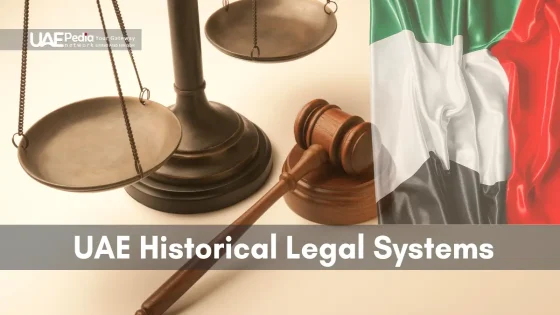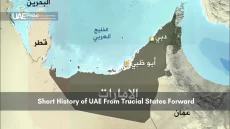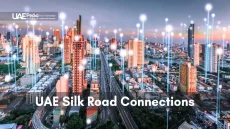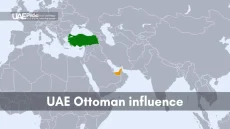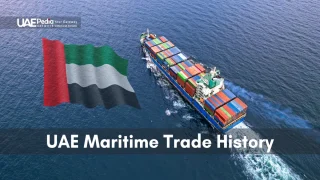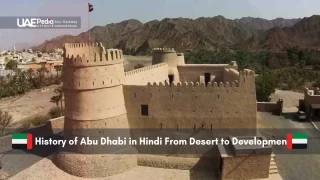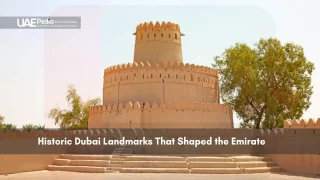What if a city famed for futuristic ambition still whispers ancient desert wisdom? Long before luxury malls and neon-lit skylines, this thriving metropolis began as a modest trading post shaped by Bedouin resilience. Its story isn’t just about rapid growth—it’s about honoring traditions that turned survival into art.
Walk through the Al Fahidi quarter’s wind-tower houses, and you’ll feel the heartbeat of a community that thrived on trade and tribal bonds. Early settlers along Dubai Creek didn’t just build dhows—they crafted a cultural DNA blending Islamic values with desert pragmatism. Today, that legacy lives in souks fragrant with oud, coffee rituals in majlis gatherings, and the warm hospitality etched into every interaction.
Modern marvels like the Burj Khalifa might dominate postcards, but the soul of the place lingers in quieter moments. Picture sipping karak chai where pearl divers once haggled, or joining a Bedouin-style desert camp under stars unchanged for centuries. This duality—past and present in constant conversation—makes the city unlike any other global hub.
- Discover how nomadic survival strategies shaped Dubai’s innovative spirit
- Uncover hidden heritage sites that reveal pre-oil era ingenuity
- Explore why traditional practices remain vital in a hyper-modern society
The Bedouin Foundations of Dubai’s Identity
Imagine a society where every handshake carries centuries of desert wisdom. The Bedouin didn’t just survive harsh sands—they built unbreakable codes of kinship that still shape social DNA today. At its core, this identity thrives on tight-knit family bonds and shared responsibility, like camel herders navigating dunes together.
Threads of Tradition in Daily Life
Step into a local market, and you’ll spot the dishdasha’s crisp white fabric—a practical choice for desert heat that became a national symbol. Women’s abayas, once simple protection from sun and sand, now blend modesty with haute couture. These garments whisper stories of a people who turned survival into style.
When Hospitality Becomes Heritage
Ever been greeted with dates and Arabic coffee before exchanging names? That’s Bedouin hospitality in action. Homes here often feature a majlis—a welcoming sitting area where strangers become friends. One local artisan told me: “We treat guests like family because ancestors knew loneliness could kill in the desert.”
| Aspect | Traditional Practice | Modern Influence |
|---|---|---|
| Clothing | Dishdasha for sun protection | High-end designer adaptations |
| Social Gatherings | Majlis storytelling circles | Community forums in malls |
| Family Values | Multi-generational desert camps | Extended family compounds |
During festive seasons, you’ll see these customs shine brightest. Children learn respect through helping elders, while neighborhood bonds mirror the tribal support systems of old. It’s not nostalgia—it’s how community remains the bedrock of daily life.
Evolution Through Trade, Fishing, and Pearl Diving
Long before skyscrapers kissed clouds, life here pulsed to the rhythm of tides and trade winds. Coastal communities along the creek hauled nets bursting with hamour fish—a staple protein that fueled early growth. These humble fishing settlements became economic anchors, attracting merchants from India and Persia who bartered spices, textiles, and gold.
Early Fishing Settlements and Trading Hubs
Deira and Bur Dubai emerged as vital trading hubs by the 1800s. Wooden dhows carried dried fish to distant ports, returning with goods that transformed the creek into a bustling marketplace. Locals perfected preservation techniques—salting catches under the blazing sun—to feed caravans crossing desert routes.
Pearl Industry and Its Impact on the City
Pearl diving wasn’t just an industry—it was a way of life. At its peak, over 1,200 boats hunted oyster beds in the Gulf. Divers risked everything for “white gold,” earning the region global acclaim. One captain’s journal reveals: “We’d sail for months, surviving on dates and grit. A single perfect pearl could feed a family for a year.”
| Traditional Practice | Modern Legacy |
|---|---|
| Bartering fish for goods | Free trade zones driving global commerce |
| Hand-sewn pearl sacks | Luxury jewelry brands sourcing Gulf pearls |
| Moon phase navigation | Advanced maritime logistics systems |
When cultured pearls flooded markets in the 1930s, the city pivoted swiftly. Trading instincts honed over centuries turned crisis into opportunity—laying groundwork for today’s economic resilience. Walk through the Gold Souk’s glittering lanes, and you’ll still feel that enterprising spirit in every haggled deal.
dubai history and culture: Bridging Past Traditions with Present Trends
How does a metropolis known for 24/7 energy pause each sunset for centuries-old rituals? Visitors quickly notice this blend—call to prayer echoing between glass towers, modest attire beside haute couture. The rhythm of devotion persists even as innovation accelerates.
Islamic Heritage and Religious Practices
Ramadan transforms the city’s pulse. Restaurants curtain windows during fasting hours, while sunset cannon blasts signal iftar feasts. A local chef shared: “We update menus yearly, but family recipes stay unchanged—like my grandmother’s harees porridge.” The government enforces public decorum laws during holy days, encouraging modesty in dress and behavior.
Language and Communication in a Multicultural City
Walk through business districts and you’ll hear Arabic greetings mix with English negotiations. Street signs display both scripts—a nod to residents from 200+ countries. One expat teacher explained: “My students code-switch effortlessly—discussing TikTok trends in English, then reciting Quranic verses perfectly.”
| Aspect | Tradition | Modern Adaptation |
|---|---|---|
| Ramadan Observance | Sunset cannon meals | Gourmet iftar boxes delivery |
| Dress Code | Modest abayas/kanduras | Designer fabrics with cooling tech |
| Language Use | Classical Arabic | Emirati dialect + global English |
Visitors adapt quickly—covering shoulders during mosque tours, avoiding public eating during fasting hours. These gestures build bridges between ancient customs and contemporary urban life. As one tour guide puts it: “Respect opens doors here—literally and culturally.”
Cultural Expressions: Music, Dance, and Poetic Traditions
What if every drumbeat carried a thousand-year-old story? The city pulses with rhythms where camel caravan chants meet EDM basslines. You’ll find this fusion in unexpected places—a heritage village hosting hip-hop battles, or opera houses where oud players jam with jazz saxophonists.
From Desert Chants to Global Stages
Ayyala dance troupes still perform at weddings, men swaying with canes to mimic Bedouin swordplay. Meanwhile, the Dubai Opera hosts Beyoncé and Syrian qanun virtuosos in the same week. “Our ancestors sang to survive sandstorms,” says local musician Rashid Al-Mansoori. “Now we compose survival anthems for the digital age.”
Poetry That Dances Off the Page
Nabati poetry—once recited around campfires—now trends on TikTok with #DesertVerses. At the Dubai New Year celebrations, fire dancers reinterpret folktales using drone light shows. Three cultural experiences you shouldn’t miss:
- Al Fahidi District’s moonlight poetry nights
- Razfa performances where clapping becomes communal storytelling
- Sound installations merging whale songs with pearl divers’ work chants
Galleries like Alserkal Avenue prove creativity thrives here. You might stumble upon a pop-up exhibit where AI generates Bedouin-style couplets. It’s not about replacing tradition—it’s writing the next verse together.
Historical Milestones: A Timeline of Transformation
How did a desert outpost become a blueprint for 21st-century cities? Let’s trace the pivotal moments that rewrote its destiny. From camel caravans to cargo ships, strategic choices turned this trading crossroads into a magnet for global ambition.
Key Events Shaping Trade and Governance
1830 marked a turning point when the Bani Yas tribe established control, prioritizing the creek area as a hub for regional exchange. By 1902, tax exemptions lured merchants from Iran and India—transforming the market into the Gulf’s busiest port. One trader’s ledger notes: “We moved spices faster here than in Bombay.”
The 1966 discovery of oil funds sparked infrastructure construction, while 1971’s UAE unification positioned the area as a diplomatic capital. Leaders invested profits into roads, schools, and hospitals—laying groundwork for future tourism.
Modern Marvels Redefining Urban Life
1999’s sail-shaped Burj Al Arab hotel reimagined luxury hospitality, its suites costing more than some palaces. The 2010 unveiling of Burj Khalifa—a 2,722-foot testament to ambition—anchored a downtown area now buzzing with 120+ nationalities.
| Era | Landmark | Impact |
|---|---|---|
| 2008 | Dubai Mall opens | World’s largest retail space |
| 2020 | Expo City completion | Global innovation showcase |
| 2023 | Palm Jebel Ali launch | Coastal construction triples |
Today, the creek area still thrives—but with abra boats ferrying tourists instead of pearls. Historic sites like Al Fahidi Fort now house museums, while new markets push boundaries in AI and renewable energy. The past isn’t just preserved here—it’s the foundation for every leap forward.
Final Reflections: Preserving Heritage Through Bedouin Traditions
What if tomorrow’s innovations drew strength from yesterday’s wisdom? The silent pulse of desert traditions beats through this metropolis, where elders still recite poetry in shadowed courtyards while startups code in glass towers. Bedouin values—resourcefulness, kinship, reverence for nature—remain the compass guiding its evolution.
Government initiatives safeguard heritage sites and fund cultural festivals, ensuring traditions stay woven into daily life. Communities pass down skills like falconry and weaving, making history a living part of modern identity. Visitors from 200+ countries quickly learn: respect opens doors here. Cover shoulders at mosques. Accept that karak chai invitation. Share stories in a majlis.
Thriving business sectors coexist with ancient customs because both fuel progress. Luxury hotels host camel-milk tastings. Tech hubs adopt the Bedouin principle of sharing resources. Every interaction becomes a bridge between eras.
As you explore, remember: responsible tourism means honoring the people who shaped this place. Let your visit leave no trace but appreciation. The world watches how this city balances growth with roots—a lesson in preserving soul amid skyscrapers.
Carry forward the warmth of shared meals and starlit desert tales. In a time of constant change, these traditions remind us what endures.
Bedouin roots grounded the area in resilience and communal values—think camel caravans, desert hospitality, and oral storytelling. Their influence lives on in social customs like serving Arabic coffee (gahwa) to guests, wearing the kandura for men and abaya for women, and prioritizing family bonds in daily life.
Before oil, pearling fueled the Gulf’s trading networks for centuries. Divers risked months at sea harvesting oysters, creating a booming industry that connected local merchants with global markets. The decline in the 1930s shifted focus, but heritage sites like the Dubai Pearl Museum keep this era alive.
From restoring Al Fahidi Historical Neighborhood to hosting the annual Sheikh Mohammed Heritage Awards, initiatives blend conservation with education. Traditional souks like Deira Gold Market thrive alongside modern attractions, ensuring craftsmanship and trading traditions remain part of daily life.
Dress modestly in public areas, avoid public displays of affection, and ask permission before photographing locals. During Ramadan, refrain from eating or drinking in daylight hours outdoors. A simple “shukran” (thank you) or “marhaba” (hello) in Arabic goes a long way!
Over 200 nationalities call this place home, creating a vibrant mix where global cuisines, festivals like Diwali or Eid, and multilingual signage coexist. Yet core Emirati traditions—like Friday family gatherings in majlis seating areas—remain central to community life.
Visit the Dubai Creek’s abras (water taxis), which still ferry passengers as they did for traders centuries ago. The Etihad Museum and Sheikh Saeed Al Maktoum House display artifacts from the pearl diving era, while Jumeirah Fishing Harbor offers a glimpse of daily catch traditions.



